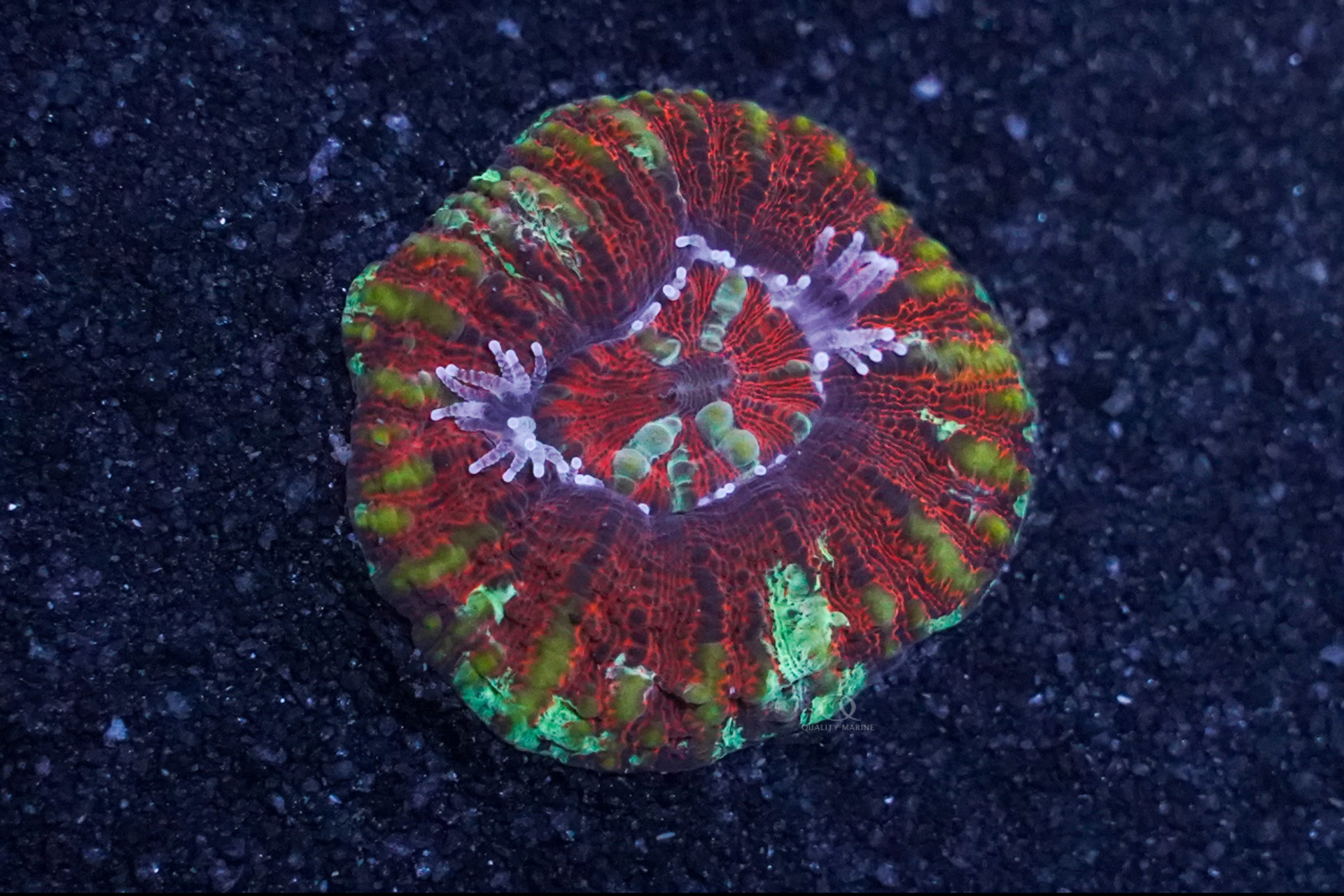Stupendous Scolymia!

Between 1848 when it was first cataloged for western science and today, the coral that most of us call Scoly or Scolymia has had many different common names, and more than a few scientific ones as well. All of the common names make sense. You can easily see why someone would call this a Button coral, or a Donut Coral. Though the term “Button” is more accurately applied to Cynaria genus corals, and “Donut” is a term we usually reserve for Acanthophyllia deshayesiana. The interesting one is “Scoly,” which bears a little background explanation.

In 1848 A French zoologist named Henri Milne-Edwards published one of his many books with Jules Haime, a younger scientist who specialized in geology, paleontology and coral. In this book “Rechererches Sur Les Polypiers,” lives the original description of our Scoly and they called it “Caryophyllia australis.” Since that time, there have been several re-classifications and combinations including the one that was in use when Scolymia rose to aquarium popularity and gave this coral its most widely used common name, “Scolymia australis.” It has since gone through another reclassification, and for those of you who are into nomenclature, the correct name for this as of January 2024 is “Homophyllia australis.” Because these names occasionally change, and sometimes they change faster than international regulators can keep up with, you'll still find Scolymia on our website with the scientific name Scolymia australis, and this will change when everyone else catches up with the scientists!
Regardless of what you call this coral, Scolymia are some of the most beautiful and popular corals for the home aquarium. They come in a nearly endless array of colors and patterns. So many that we most often offer them via our WYSIWYG portal to our retail partners. The more commonly available color patterns can be seen here: https://www.qualitymarine.com/quality-marine/coral/corals-lps/scolymia/.
Not only are Scolymia gorgeous, but they aren't difficult to keep either. They don't really have a size requirement for a tank, Mini Scolys make excellent desktop nano-tank corals! You can keep them very close to other Scolys so collect away! They'll do best placed on a soft grain sand bed or a bare bottom tank where they can be stable and in low to moderate light. They can adapt to higher lighting, but this should be done gradually, over the course of days or even weeks. Place them away from aggressive corals and anything sharp, including rocks as their puffy mantle can be damaged by these things. You should also avoid direct flow; even a very happy, healthy Scolymia can be irreversibly damaged by laminar flow, even if it is fairly gentle. Conversely, they do need some flow, but it needs to be turbulent / random in pattern.
There is nothing about water quality for Scolymia that will be a surprise for anyone keeping invertebrates; keep them in water that is around 74-78 degrees Fahrenheit, keep the pH stable around 8, keep nitrates under 2ppm and keep the SG nice and stable at (or just about) 1.026. Obviously for most of you who keep invertebrates, avoid copper and copper-based medications at all costs. This is a durable coral and isn't all that fussy if you give it a stable environment and feed it.
One of the most important (and most often ignored) aspects of successfully keeping Scolymia is feeding them. Indeed, most corals will do much better when target fed regularly, and with LPS corals this is even more vital. Scolys can take surprisingly large food, and even our Mini Scolymia will thrive on things like finely chopped prawn, whole mysis, even krill and chopped mussel. Larger Scolymia can take down a small portion of a silverside! You'll know when your Scoly is hungry, as they will extend polyps just inside the outer mantle. When this happens, gently target feed them by placing appropriately sized food on the little tentacle-like polyps. You won't need to do this more than once or twice a week. You'll get to know how big of a meal they want / can take by seeing what they release, or just can't handle; start small.
The only real challenge in this process is making sure the Scoly actually gets the food before it gets robbed by

overzealous fish or shrimp. Scolymia ingest this food slowly, and so if you have other fish or shrimp or even hermit crabs in your aquarium, it's very probable that the coral will not get the food down before the other aquarium denizens get to it. You can get around this sometimes by feeding the Scolymia at night, or by using a cover, like the top half of a plastic water bottle, to cover them while they eat. You'll see some people say they just feed them during feeding times when other fish and inverts are busy, but this is generally not enough time, unless the fish in your display are very timid eaters like Firefish, or very specialized and slow feeders like Dragonettes.
Color and pattern choices abound for the avid collector of Scolymia, so it's time to get started on your personal stash of them. They are very peaceful and straightforward to keep. Very few corals can dress up the lowest level of your tank like a few Scolys can, so head to your Local Fish Store, and tell them you want some Mini-Scolymia (and maybe a few regular sized ones too) from Quality Marine!